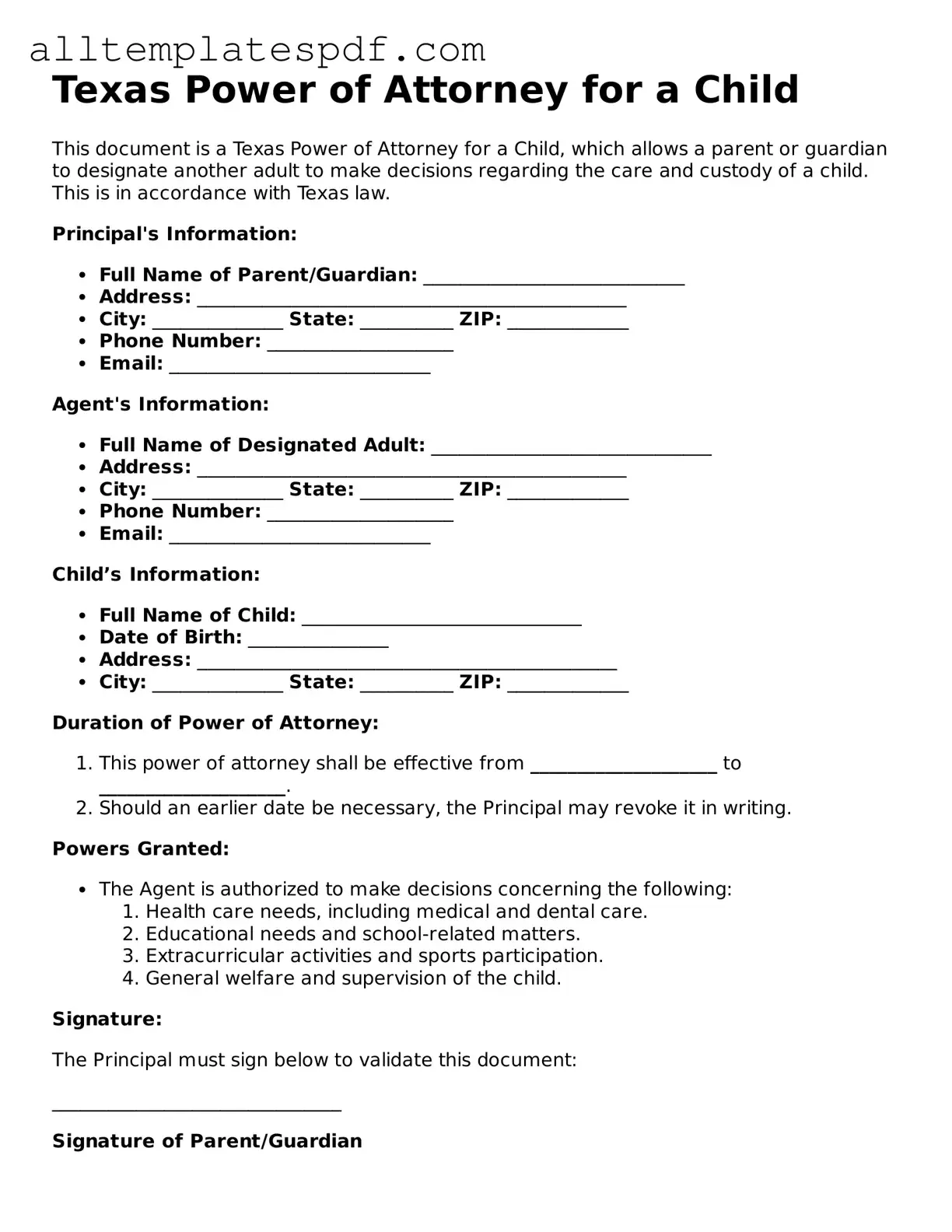Filling out the Texas Power of Attorney for a Child form can be a straightforward process, but several common mistakes can lead to complications. One frequent error is failing to provide complete information. Parents or guardians may overlook sections or provide vague answers, which can create confusion later. Each detail matters, from names to addresses, and ensuring accuracy helps avoid potential legal issues.
Another mistake involves not specifying the duration of the power of attorney. Without a clear start and end date, the document may become ambiguous. This lack of clarity can lead to misunderstandings about when the authority begins and ends, potentially putting the child’s well-being at risk.
Many individuals also neglect to consider who they are granting power to. Choosing someone without the necessary qualities or reliability can have serious consequences. It is crucial to select a responsible individual who can act in the child's best interests.
Additionally, some people forget to sign the document in front of a notary public. Notarization is an essential step that validates the document. Without it, the power of attorney may be deemed invalid, rendering the entire effort ineffective.
Another common oversight is failing to include any specific limitations on the powers granted. Without these restrictions, the agent may have broad authority that the parent did not intend to give. Clearly outlining what the agent can and cannot do is essential for ensuring that the child’s needs are met appropriately.
People also often overlook the importance of discussing the arrangement with the child. While the child may not have a say in the legal document, explaining the situation can help them understand what is happening. This transparency can ease any anxiety the child may feel about the changes in their care.
Moreover, individuals sometimes forget to keep copies of the completed form. Having multiple copies is vital for both the parent and the agent. It ensures that everyone involved has access to the document when necessary, preventing any potential disputes or confusion.
In some cases, individuals may not update the power of attorney when circumstances change. Life events, such as relocation or changes in relationships, can affect the appropriateness of the designated agent. Regularly reviewing and updating the document ensures it remains relevant and effective.
Lastly, many people fail to seek legal advice when needed. While the form may seem simple, the implications of a power of attorney can be significant. Consulting with a legal professional can provide clarity and ensure that all aspects of the form are filled out correctly, safeguarding the child's best interests.
